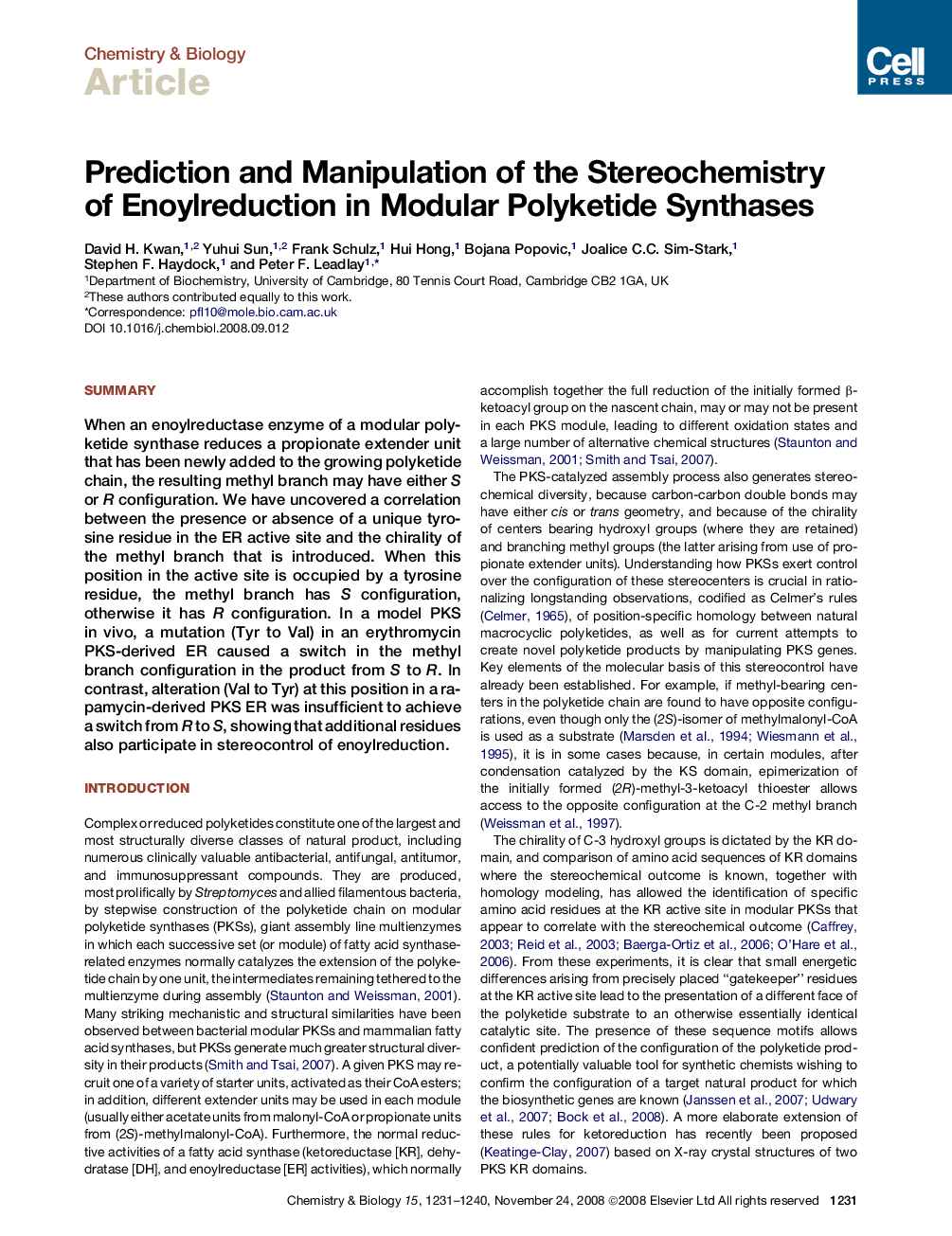| کد مقاله | کد نشریه | سال انتشار | مقاله انگلیسی | نسخه تمام متن |
|---|---|---|---|---|
| 1391654 | 983611 | 2008 | 10 صفحه PDF | دانلود رایگان |

SummaryWhen an enoylreductase enzyme of a modular polyketide synthase reduces a propionate extender unit that has been newly added to the growing polyketide chain, the resulting methyl branch may have either S or R configuration. We have uncovered a correlation between the presence or absence of a unique tyrosine residue in the ER active site and the chirality of the methyl branch that is introduced. When this position in the active site is occupied by a tyrosine residue, the methyl branch has S configuration, otherwise it has R configuration. In a model PKS in vivo, a mutation (Tyr to Val) in an erythromycin PKS-derived ER caused a switch in the methyl branch configuration in the product from S to R. In contrast, alteration (Val to Tyr) at this position in a rapamycin-derived PKS ER was insufficient to achieve a switch from R to S, showing that additional residues also participate in stereocontrol of enoylreduction.
Journal: - Volume 15, Issue 11, 24 November 2008, Pages 1231–1240